31 Days of HIspanic Heritage Month Trivia
Inside: Fun facts and Hispanic Heritage Month trivia to test your knowledge in your classroom or community!
Hispanic Heritage Month is a time to honor the histories, cultures and contributions of people of Latin American descent in the United States.
Many schools and communities celebrate with an annual celebration, with festivals, presentations, or displays. This resource will set you up to share a daily fun fact each day of the month! These would be great as part of school morning announcements or daily social media fun facts.
The Hispanic community is integral to the history of accomplishments of the United States. Immigrants are a vital part of that history, as well as the Latin Americans who were also part of the land and culture in the United States, long before it even had that name.
Content:
1. 31 Days of Hispanic Heritage Month Trivia & Fun Facts
2. 4 Weeks of Trivia Questions to Test Your Knowledge
3. 5 World-Changing Inventions from Latinos
4. 5 Lists of World-Changing Hispanic Americans
Related Post: Hispanic Heritage Month Activities and Ideas
If you prefer to have these as an editable Google Doc with links to sources, enter your email below and I’ll send them to you!
Hispanic Heritage Month Trivia & Fun Facts
We celebrate Hispanic Heritage Month from September 15th to October 15th.
I’ve created a set of fun facts and trivia for each day. The trivia ranges from facts about famous Hispanic Americans and Hispanic culture to geography, food, and info on the Spanish language.
September 15:
September 15th was chosen as the beginning date because it is the anniversary of Independence Day for Costa Rica, Guatemala, El Salvador, Nicaragua, and Honduras (all in 1821).
September 16:
Mexico celebrates the beginning of their fight for independence on September 15th – 16th.
September 17:
President Lyndon Johnson established National Hispanic Heritage Week in 1968. President Ronald Reagan extended it to Hispanic Heritage Month in 1988.
September 18:
September 18th is Independence Day for Chile (1810).
September 19:
The 2022 theme for National Hispanic Heritage Month is Unidos: Inclusivity for a Stronger Nation.
September 20:
As of 2019, there were 60.6 million people of Hispanic descent in the United States. As of 2020, the Hispanic/Latino population in the U.S. was approximately 18% of the total population. (Census.gov)
September 21:
Cinco de Mayo is a holiday some people celebrate in Mexico, but it is not their Independence Day. It commemorates a battle in the city of Puebla, Mexico in 1862.
September 22:
Ellen Ochoa was the first Latina astronaut to be in space., in 1993. She brought her flute to play on the nine-day mission aboard the Space Shuttle Discovery.
September 23:
Hispanic means someone of descent from a Spanish-speaking country. There are 21 Spanish-speaking countries, in North America, South American, Europe, and Africa.
September 24:
Latino means someone descended from Latin America, which includes non-Spanish speaking countries like Brazil. More and more people are now using the gender-neutral term Latinx.
September 25:
Dolores Huerta and César Chávez founded the United Farmworkers Union, which is still the largest union that fights for agricultural workers today.
September 26:
Sonia Sotomayor, who grew up in the Bronx, was sworn in as the first Hispanic Supreme Court judge, in 2009. She is in the National Women’s Hall of Fame.
September 27:
There are more Spanish speakers in the United States than in Spain, if you count people who speak Spanish as a second language!
September 28:
Rita Moreno was the first Latino to win an Oscar, for her role in Westside Story. She is one of a handful of PEGOTs in the whole world (a recipient of the Peabody, Emmy, Grammy, Oscar and Tony awards).
September 29:
California, Texas, and Florida have the largest Hispanic population of any states.
As of 2019, there were 1.25 million Hispano/Latino veterans in the United States.
September 30:
Spanish is the world’s number 2 language. There are almost 500 million Spanish speakers in the world.
As of 2021, these were the top five countries by number of native Spanish-speakers:
- Mexico
- Colombia
- Argentina
- Spain
- United States
October 1:
Roberto Clemente was the first Latino inducted into the Baseball Hall of Fame. He hit 240 home runs and had 3,000 career hits. He received the Presidential Medal of Freedom in 2003.
October 2:
The Andes Mountains (also known as the Cordillera de los Andes) are the world’s longest mountain range.
October 3:
Even though Spanish is the official language of most Latin American countries, there are more than 370 languages spoken across Central and South America.
October 4:
Carlos Santana was the first Latino inducted into the Rock and Roll Hall of Fame (1998).
October 5:
The Aztec and Maya were pre-Spanish empires, with the Aztec spread across much of modern day Mexico and the Maya in southern Mexico/ northern Central America. We can trace the source of chocolate back to the Aztec and Maya civilizations!
October 6:
The Amazon rainforest in South America produces 20% of the world’s oxygen. The Amazon River is the largest river in the world.
October 7:
Lin-Manuel Mirando is a Pulitzer Prize winner and writer of the Broadway shows Hamilton and In the Heights.
October 8:
In 1848, at the end of the Mexican-American war, the United States annexed New Mexico, Texas, Arizona, and California.
Many cities and states have Spanish names. Some examples: Los Angeles, San Francisco, Colorado, Santa Fe, etc.
October 9:
Selena Quintanilla was a Grammy award-winning singer born to Mexican parents. She is known as the Queen of Tejano Music, or the Madonna of the Tejano.
October 10:
Chichén Itzá, one of the seven wonders of the world, is a city in the Yucatán Peninsula of Mexico. It’s famous for its pyramid El Castillo (the Mayans were famous for their astronomy and there are 365 steps, for each day of the year).
October 11:
Some examples of famous Latin foods are: tacos, tamales, arepas, ceviche, rice and beans, flan, and more.
October 12:
Although today is officially Columbus Day, many people are fighting to change the name to Día de la Raza, or Día de la Hispanidad. This honors the many indigenous people who already lived in the Americas (and lost their lives due to the arrival of Columbus).
October 13:
Sylvia Mendez was only 8 years old when she was at the center of the 1947 Mendez vs. Westminster case. This led to the desegregation of schools in California. She received the Presidential Medal of Freedom in 2011.
October 14:
Día de Muertos, or Day of the Dead, is a special holiday celebrated in Mexico and some other countries. It’s a day to remember and celebrate family and friends who have passed on. Even though it’s celebrated October 31-Nov. 1, don’t get in mixed up with Halloween- they are two different holidays!
October 15:
The Incan civilization was an empire stretched across much of South America before the arrival of the Spaniards. Machu Picchu, an Incan site in Peru, is one of the seven wonders of the world.

23 Trivia Questions to Test Your Knowledge
These have some overlap with the fun facts above. However, they are reformatted into questions with suggested answers in case you want to do questions with prizes.
General Questions
1. What is the difference between the words Hispanic and Latino?
Hispanic refers to someone from or with ancestors from a Spanish-speaking country. It includes people from Spain and Equatorial Guinea.
Latino refers to someone from or with ancestors from a country in of Latin origin, usually Latin America. This term includes some non-Spanish-speaking countries such as Brazil.
The U.S. Office of Management and Budget… defines “Hispanic or Latino” as a person of Cuban, Mexican, Puerto Rican, South or Central American, or other Spanish culture or origin regardless of race.
– U.S. Census Bureau
2. Which two presidents made National Hispanic Heritage Week and Month official?
President Lyndon Johnson established National Hispanic Heritage Week in 1968. President Ronald Reagan extended it to Hispanic Heritage Month in 1988.
3. Why does Hispanic Heritage Month start on September 15th?
September 15th was chosen as the beginning date because it is the anniversary of Independence Day for Costa Rica, Guatemala, El Salvador, Nicaragua, and Honduras (all in 1821).
4. Name two U.S. states that formerly belonged to Mexico.
California, Nevada, Utah, Texas and New Mexico, along with most of Arizona and Colorado, and some of Oklahoma, Kansas, and Wyoming.
5. Which are the top 3 Latin American nations represented in the United States?
Mexico, Puerto Rico, and Cuba, respectively.
The Spanish Language
6. How does Spanish rank among the world’s most-spoken languages?
Spanish is the second most-spoken language in the world, after Mandarin Chinese.
7. What percent of people in the U.S. speak Spanish?
About 13% of the U.S. population speaks Spanish at home, or 45.7 million people.
8. How many Spanish-speaking countries are there?
There are 21 Spanish-speaking countries with Spanish as the official language, if Puerto Rico is counted.
9. How many continents have countries with Spanish as the official language?
It depends on how you count the continents. Europe, Africa, and the Americas (North, South, and Central America) all make the list.
10. What are the top 5 Countries by number of Spanish Language Students? (2021 source)
- United States
- Brazil
- France
- United Kingdom
- Italy
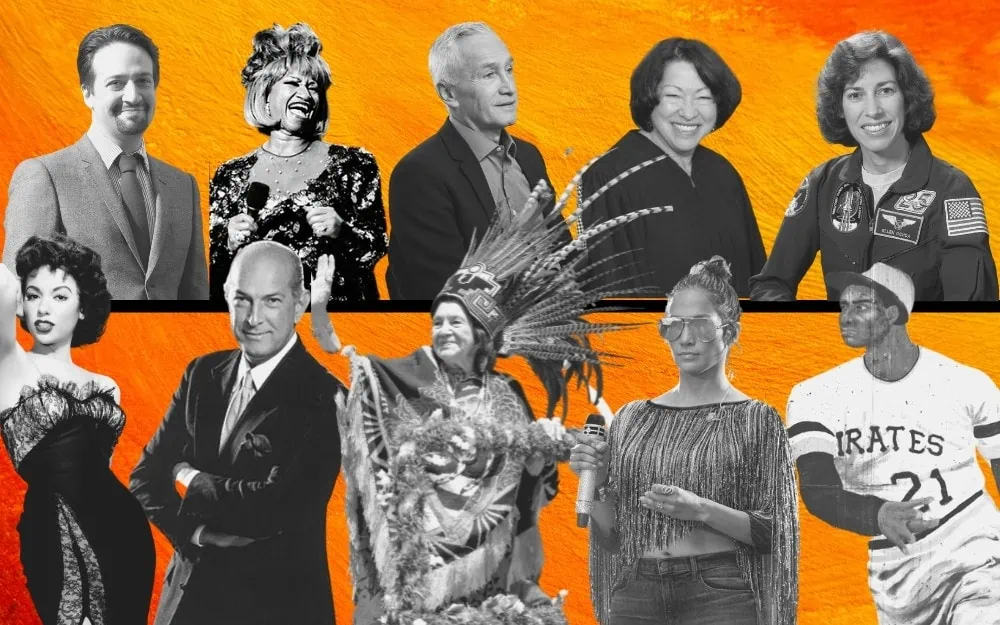
Famous Hispanic-Americans
11. Who wrote the House on Mango Street?
Sandra Cisneros
12. Who was the first Latina in space?
Ellen Ochoa
13. Who was the first Latino to be inducted into the Baseball Hall of Fame?
Roberto Clemente
14. Who was sworn in as the first Hispanic Supreme court judge in 2009?
Sonia Sotomayor
15. Who was known as the Queen of Salsa, from Cuba?
Celia Cruz
Latin American Culture
16. What does Cinco de Mayo celebrate?
Cinco de Mayo is a holiday some people celebrate in Mexico, but it is not their Independence Day. It commemorates a battle in the city of Puebla, Mexico in 1862. It has some popularity among the chicano (Mexican-American) population as well.
17. From which country did Latin American countries declare their independence?
Spain
18. What does Día de Muertos or Day of the Dead celebrate?
Día de Muertos, or Day of the Dead, is a special holiday celebrated in Mexico and some other countries. It’s a day to remember and celebrate family and friends who have passed on. Even through it’s celebrated October 31-Nov. 1, don’t get in mixed up with Halloween- they are two different holidays!
19. Can you name 5 foods from Latin America?
Tacos, tamales, arepas, ceviche, tortillas, empanadas, guacamole, gallo pinto, pozole, flan, arroz con leche, enchiladas, mole, patacones, chocolate, chimichurri, etc.
20. Can you name one of the three ancient civilizations in Central or South America?
The Aztec, Mayans, and Incas.
Geography
21. What is the world’s longest mountain range, located in South America?
The Andes Mountains.
22. What is the name of the largest rainforest in the world, located in South America?
The Amazon rainforest.
23. What is the world’s largest river and where is it?
The Amazon River.
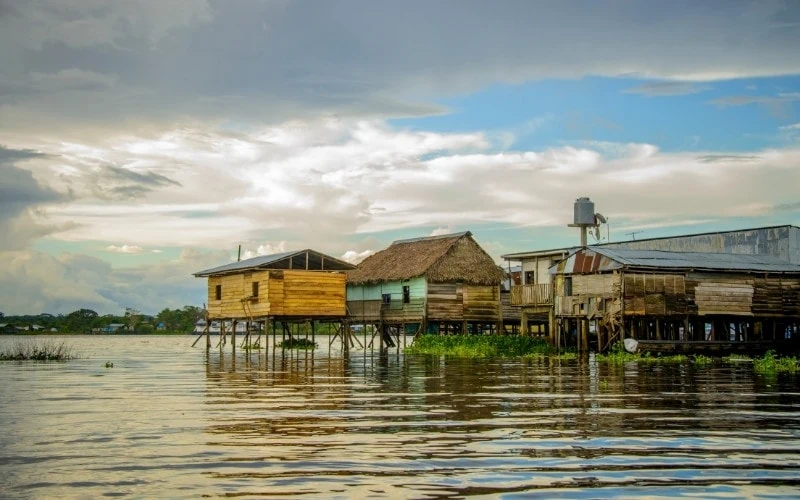
Trivia on 5 Inventions by Latinos and Hispanic Americans
1. Color TV
Guillermo Gonzalez Camarena was a Mexican engineer who obtained a patent for his Color TV invention in the 1940s.
2. Captcha Code
Luis von Ahn is a Guatemalan-born computer expert and currently a professor at Carnegie Mellon University in Pennsylvania. He created the reCAPTCHA tool to catch spammers on websites. He also created the language-learning platform DuoLingo.
3. Contraceptive Pills
Luis Miramontes, a Mexican chemist, was only in his 20’s when he discovered the missing step in making birth control into pill form.
4. First Artificial Heart
Domingo Liotta, an Argentinian surgeon, created the first totally artificial heart in 1969. It was test at St. Luke’s Episcopal Hospital in Houston and worked for three days. This prototype later led to permanent solutions.
5. Neonatal Artificial Bubble
Claudio Castillón Lévano, from Peru, invented the equipment used to keep premature babies safe and regulate airflow, temperature, and humidity.
Famous Artists, Scientists, Musicians, and Athletes
1. Name a famous Hispanic-American author:
2. Name a famous Hispanic American singer:
- Selena
- Jennifer Lopez
- Ricky Martin
- Rita Moreno
- Selena Gomez
- Gloria Estefan
- Christina Aguilera
- Pitbull


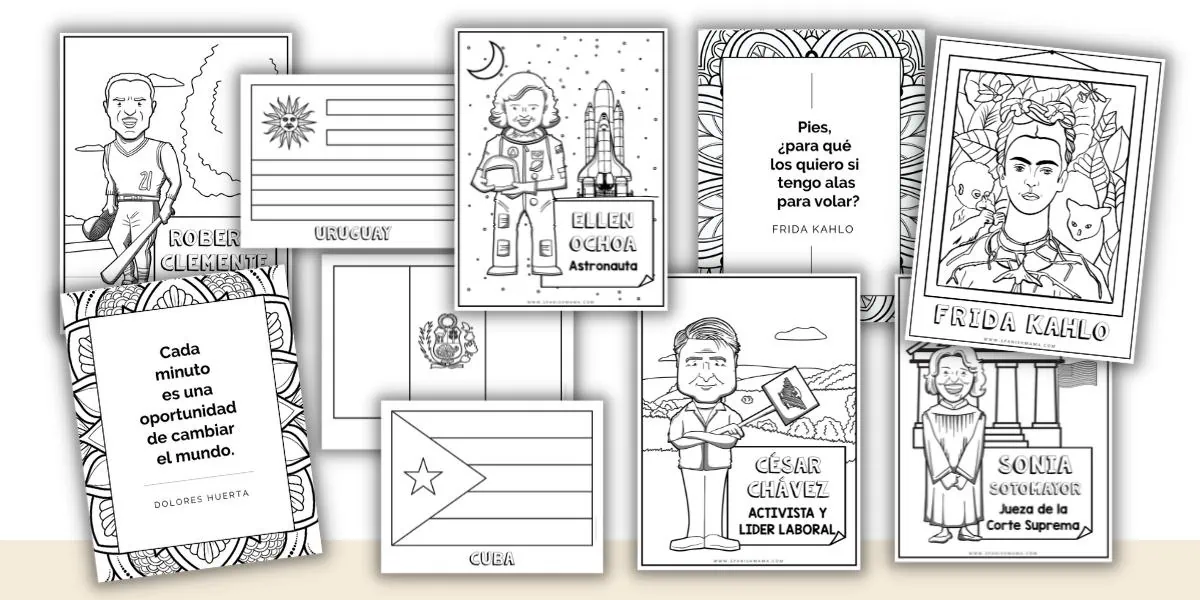
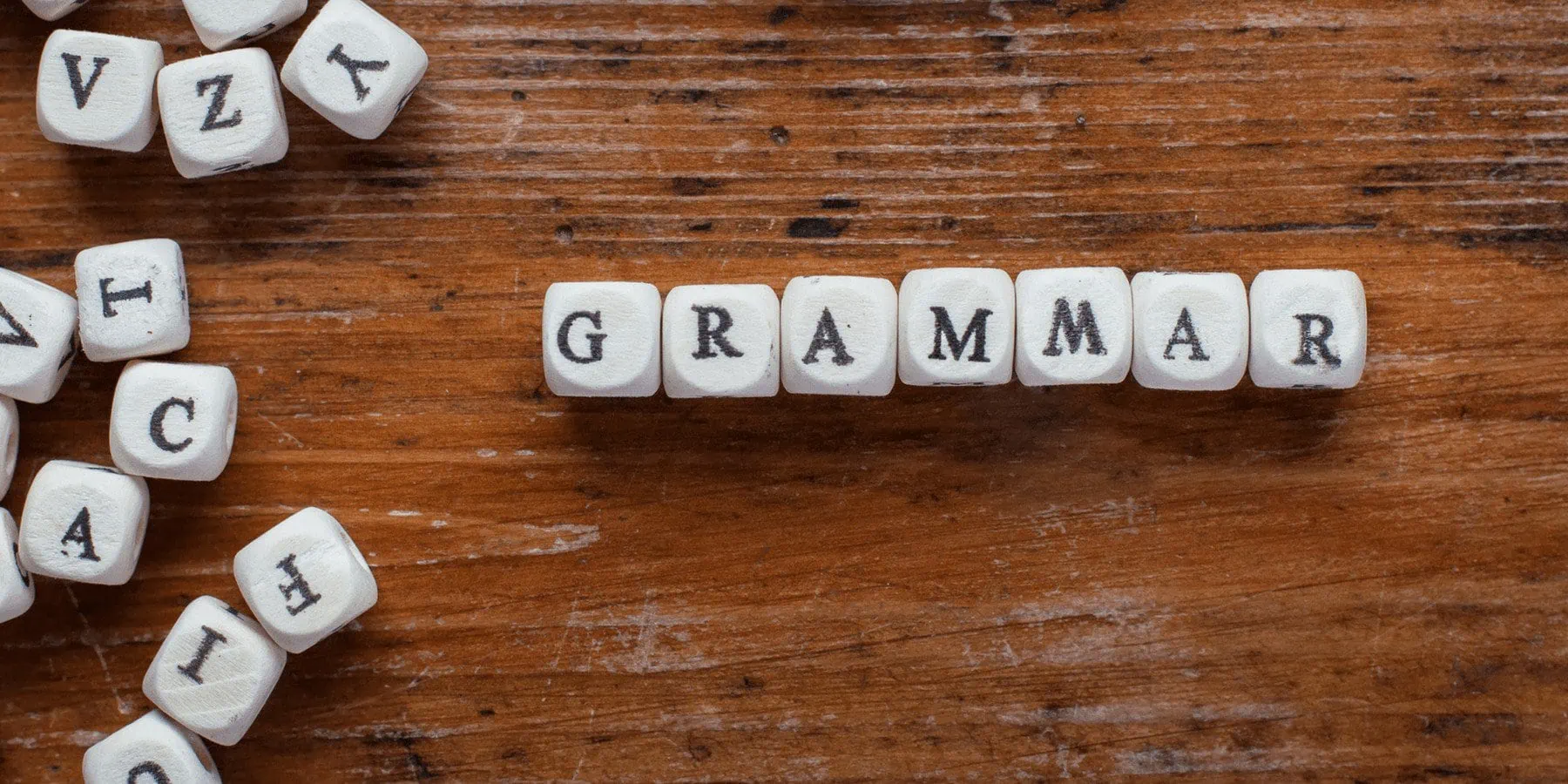
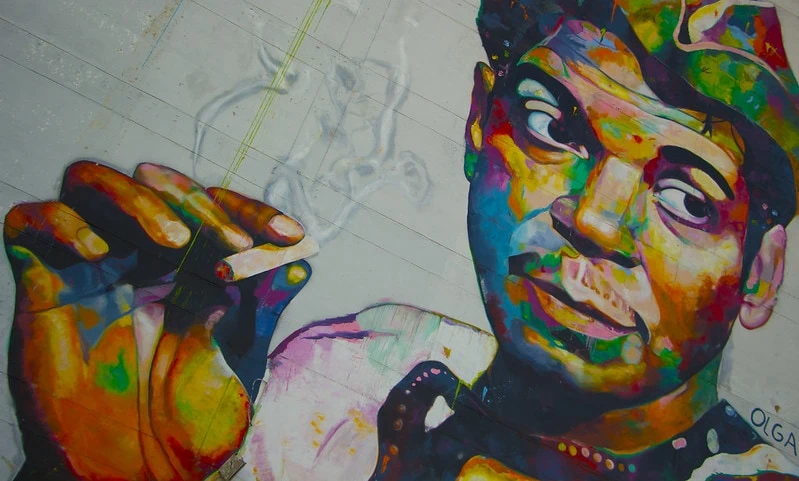


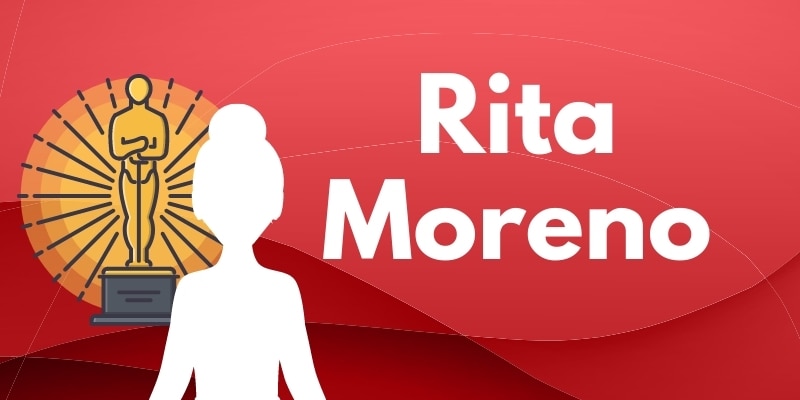
For 2023, I think the theme is: Latinos: Driving Prosperity, Power, and Progress in America. Would be great if you could update the page. Gracias!